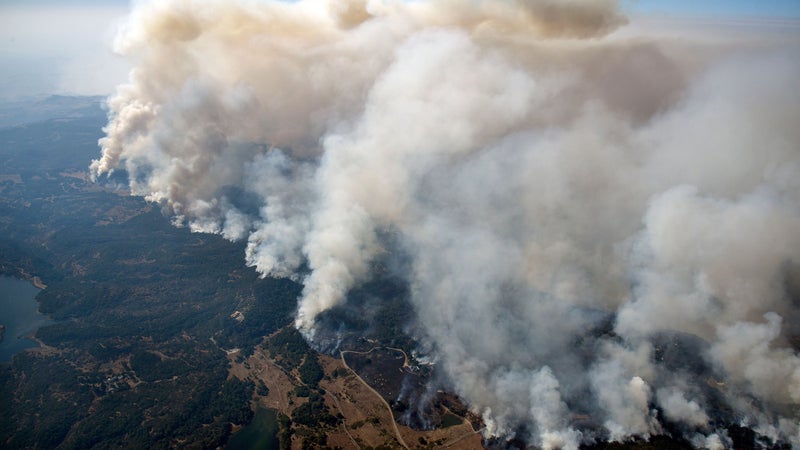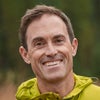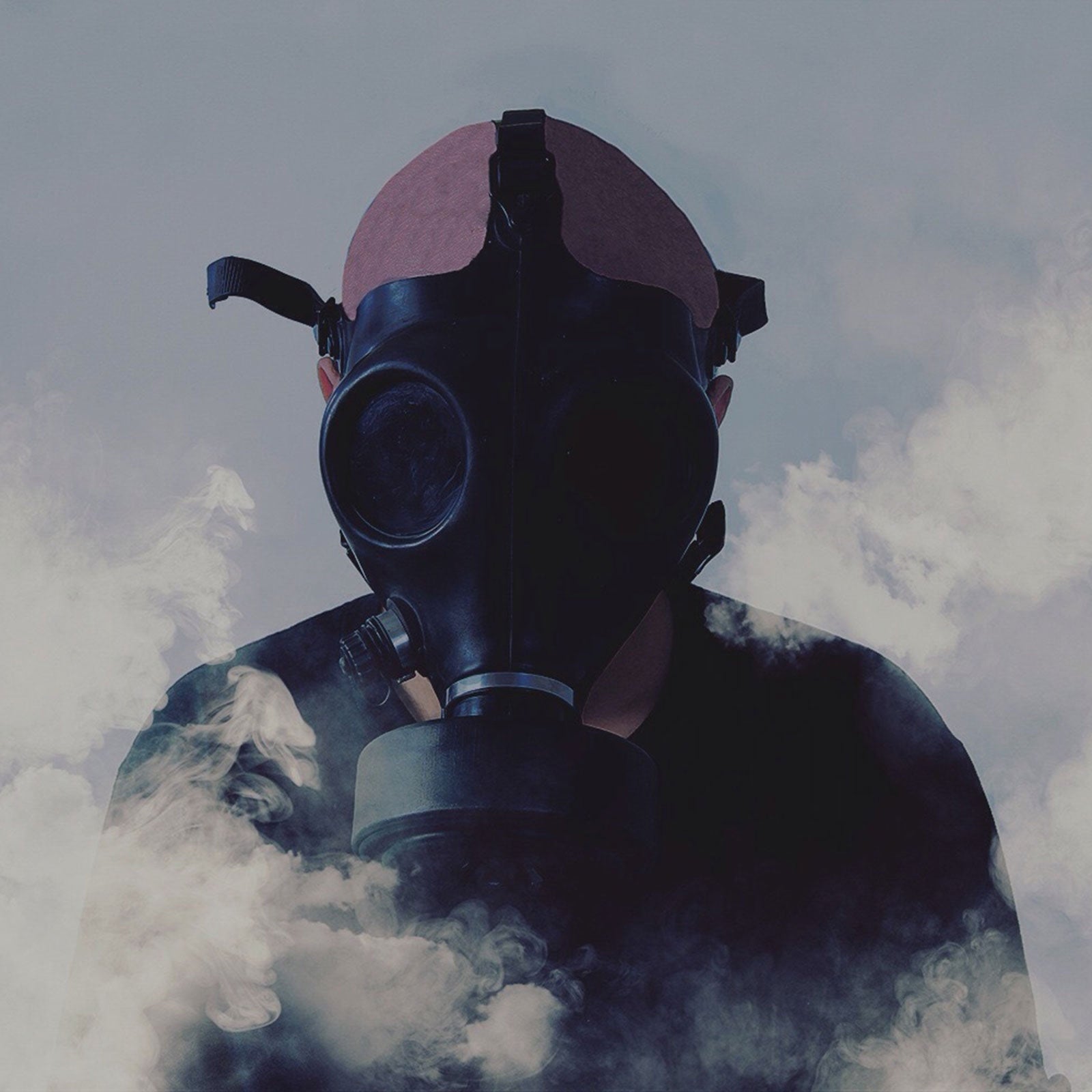Burn we must. One hundred–plus years of wildland fire suppression and an ever hotter planet make this an ineluctable truth in the American West. From the shrublands to the subalpine forests, fire—an integral part of any healthy landscape—is now acting as an adaptation catalyst that’s rapidly reshaping entire ecosystems.
That adaptation is essential. Thanks to climate change, we are seeing record high temperatures and record low moisture levels in vegetation. Add the increasingly popular dream of owning a home in the woods (the fastest-growing land-use type in the country is the ), plus infrastructure risk factors like balky power lines, and we’re looking at a dire future of frequent catastrophic megafires from New Mexico north to Alberta and west to the Pacific. Some of us can remember the great Yellowstone fires of 1988, which resulted from a record hot and dry spell. “By the end of the century, in Yellowstone every year or every other year will be hotter and drier than 1988,” says Philip Higuera, an associate professor of fire ecology at the University of Montana.
Scientists have been warning for decades that the West is due for purging wildfires. Now that the blazes are here, we’re beginning to grapple with a harsh reality. If you live in the West, you’ve heard plenty about the need for communities to adopt fire-resistant building codes, bury power lines, establish evacuation routes, and remove fuel through routine clearing and prescribed burns. Meanwhile, policymakers—though not politicians—are coming around to the idea that we should stop spending our national treasure and risking the lives of firefighters to battle remote blazes, even if a handful of homes are at stake. The age of wildland fire suppression has to end.
Over a period of decades, controlled burning and fire-wise construction should dramatically reduce the impact of blazes on settlements across the West. But those measures, along with natural changes like the conversion of some forests to grasslands, won’t do a damn thing to protect us in the near term from what may be the greatest hazard to human health in our new climate: smoke.

Wildfire smoke has been a natural part of life on earth for . In North America, Native people lived with the air pollution from lightning-sparked wildfires as well as the burns they lit on purpose. But in general, those regular smaller fires were far less intense than the infernos we’re experiencing now. In the West today, wildfires aren’t just burning grasses on the floor of a ponderosa pine forest or wiping out high-elevation stands of lodgepole every 100 to 250 years—they’re burning forests from weeds to canopy and covering vast acreages. They’re also , persisting for as much as seven months of the year in most of the West (compared with the four-to-five-month fire season that was typical 50 years ago), and producing more smoke.
In addition to hazardous chemicals that are released when structures ignite, wildfire smoke commonly contains toxic ingredients. The chief threat, however, is prolonged exposure to the fine particulate matter suspended in smoke. When inhaled, these particles, which are as small as 2.5 micrometers in diameter (a grain of table salt is 100 micrometers), can have serious health effects. Research has shown that wildfire particulate is associated with of respiratory infection and death. One study estimated that some in the U.S. are linked to particulate from wildfires, and that by the end of the century.
“The smoke we’re experiencing now is causing us to reevaluate how we live our lives,” says Tony Ward, chair of the School of Public and Community Health Sciences at the University of Montana. Unfortunately, he adds, there’s been little funding for studies that focus on the issue. “Very large populations are being exposed. We need to devote more resources to protecting the public.”
Last fall, during the deadly Camp Fire near Paradise, California, San Francisco was when it was estimated that wildfire smoke made breathing the city’s air for a single day equivalent to smoking ten cigarettes. As bad as that was, a more revealing case study is Seeley Lake, Montana. In the summer of 2017, several nearby fires caused smoke levels to reach hazardous levels on 36 out of 50 days. How nasty was the air? By the EPA’s standards, things start to get unhealthy when the pollution-borne particulate levels reach 35 micrograms per cubic meter of air. In Seeley Lake, the particulate levels were routinely in excess of 300 micrograms per cubic meter. Twenty times that summer, the hourly levels measured 1,000 micrograms or higher, effectively maxing out the devices that measure particulates.
In a normal year, Seeley Lake is an outdoor adventurer’s dreamscape, known for its lakes, rivers, and mountain trails, but that summer the town became a laboratory in the nascent study of wildfire smoke’s effect on human health. Respiratory-related emergency-room visits doubled in Missoula and Powell Counties. A team of researchers from the University of Montana scrambled to measure the impact of smoke on the residents, while air-quality specialists from nearby Missoula helped secure home air-filtration units for the most at-risk citizens. The responders were trying to keep people healthy in the short term, but as Ward notes, nobody in government knew what the long-term effects would be. Eleven months after the smoke cleared, we got an unsettling clue. Instead of recovering, 29 residents studied experienced a decline in lung function in the ensuing clean-air period. The researchers don’t have an explanation for this.
Controlled burning and fire-wise construction, along with natural changes like the conversion of some forests to grasslands, won’t do a damn thing to protect us in the near term from what may be the greatest hazard to human health in our new climate: smoke.
The dearth of science is a common theme with wildfire smoke. Which is why, until very recently, the advice for dealing with smoke typically amounted to: don’t exercise if your eyes feel itchy, and stay inside—which, it turns out, doesn’t offer all that much protection. Particulates seep in, and without a filtration system the air indoors can be almost as unhealthy as what’s outdoors.
Going forward, our schools, offices, and homes will need to be outfitted with filtration systems capable of capturing fine particulate matter. The costs will be steep. Faced with the crisis in Seeley Lake, Sarah Coefield, an air-quality specialist with the Missoula County health department, tapped into state emergency-preparedness funds usually reserved for infectious-disease outbreaks to buy air purifiers for schools and health clinics. Now, thanks to some grants and a bit of ingenuity on Coefield’s part—she had everyone in her department with a Costco card buy five units during a sale—the county owns 123 purifiers that it can dole out in times of need.
That kind of problem-solving should be applauded, but we need a better approach to address a health crisis that could affect half the country. As we’ve learned the hard way, mountain towns aren’t the only places at risk. Last fall on the California coast, hundreds of miles from any blazes, surfers were coughing in the lineup. In Seattle, smoke drifting south from summer fires in British Columbia caused kids’ and forced other activities indoors.
Among smoke’s many economic impacts will be a hit to tourism. As with hurricane season in the Caribbean, travelers are wising up to fire season in the West. Yosemite and Glacier National Parks, as well as the communities whose economies depend on them, have sacrificed untold revenue either to active fires or to unhealthy smoke levels in recent years. Oregon lost an estimated $51 million in 2018, while Montana lost an estimated $240 million the year before. Anecdotally, bike shops in Missoula report dramatic downturns in business whenever smoke levels hit unhealthy levels. Last summer, �����ԹϺ��� published a story online recommending that eager backpackers should plan their trips in the West for no later than July, before smoke season amps up.
So far our collective response to all this has been to buy a lot of respirators—the models capable of filtering out smoke particulates last summer—and not much else. In January 2020, California will implement new air-filter guidelines for public buildings that include systems capable of eliminating wildfire particulates, but other states don’t appear to be following its lead. Meanwhile, we need to improve data models that predict where smoke will travel and launch digital platforms that warn downwind residents about unhealthy air conditions. In India, which has notoriously awful pollution, there’s an app that offers real-time updates on air quality and personalized recommendations regarding exposure. We need a similar tool, starting now.
Making meaningful progress will require investment in research. But as the scientists I interviewed were quick to point out, the federal government under its current leadership isn’t keen on funding studies tied to climate change. For the time being, our best tactic is to push policymakers to redirect resources away from fighting remote fires and toward securing buildings and homes from smoke.
In natural-history terms, as we learn to embrace fire—both wild and prescribed—losing many of the trees that defined the West is brutally disheartening. More selfishly, those of us who play outdoors are just going to have to get used to making a lot of painful compromises. In this new age of smoke, canceled runs, rides, and backcountry adventures are part of living on a hotter planet.


